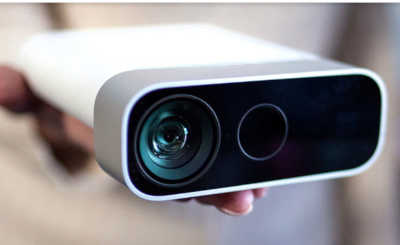| Kinect Lives - But Isn't Cheap |
| Written by Harry Fairhead | |||
| Monday, 25 February 2019 | |||
|
The new Kinect is aimed at developers rather than consumers and it has a high end spec and price to match. You can't really complain about the price - at $399 it is a professional device at a reasonable price, but when you compare it to the original Kinect you suspect that it isn't going to start a revolution. The original Kinect was revolutionary in the sense that each week you would look forward to seeing what crazy things it had been used for. It was groundbreaking, yet it didn't really go anywhere. It was a makers' and researchers' novelty rather than anything serious. It also didn't succeed in the games market and the XBox version died a death.
The new device won't work with the XBox but it is targeted at another of Microsoft's main concerns - Azure. This makes a lot of sense from Microsoft's point of view but is slightly worrying if you have plans to use the device away from the cloud. Microsoft promises the SDKs will ship with the device in June of this year and it also promises that you can use the Azure Kinect standalone or with another cloud service. For some projects Azure's AI SDKs are a good fit. The Vision API will take video from the camera and the Speech Service will work with the microphone array. The new APIs are a basic sensor interface and a body-tracking SDK and these will work with Windows 10 or Linux (Ubuntu 18.04) and both will be open sourced on GitHub. Preliminary documentation lists the following sensor API features:
Depending on the mode selected the 1 Megapixel time of flight depth sensor can work from 0.25 to 5.46m at up to 30fps. The RBG camers is 12 Megapixels with a maximum resolution of 4096x3072. You also get an accelerometer and gyro and a 7-mic circular array for voice input. You can see it in action in the promo video:
You can pre-order now and there is some limited documentation. One big negative is that none of the Kinect 2 programs will work on the new device and it isn't clear how much work is going to be needed to port them. Is this a fitting sucessor to the original Kinect? The answer has to be yes, but it is difficult not to be sad that the days of the low-cost depth camera that sparked so much creativity have passed. Perhaps now it's time for the pros to step up and show us what a depth camera is for.
More InformationRelated ArticlesIntel Ships New RealSense Cameras Is This The Kinect Replacement We Have Been Looking For? To be informed about new articles on I Programmer, sign up for our weekly newsletter, subscribe to the RSS feed and follow us on Twitter, Facebook or Linkedin.
Comments
or email your comment to: comments@i-programmer.info |
|||
| Last Updated ( Monday, 25 February 2019 ) |


